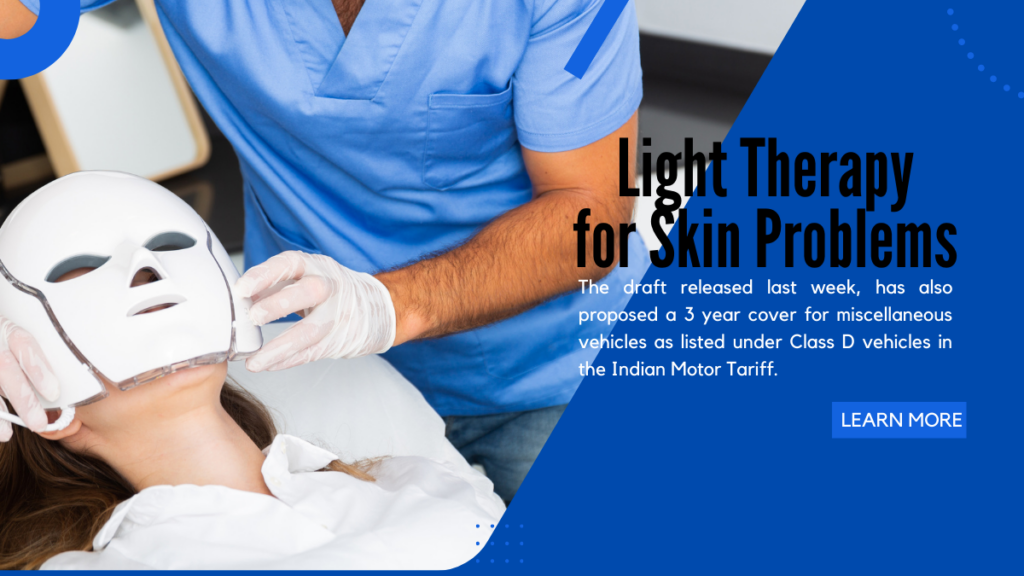Everyone is vulnerable to skin problems. Exposure to sunlight, allergens, bacteria, hormonal changes, and genetics are the common causes. No matter how mild or severe the condition is, it can affect one’s self-esteem.
Many treatments are available for various skin problems. While some may choose surgical procedures, there are safe, non-invasive treatments to try with the help of technology. One of these is light therapy.
What Is Light Therapy?
Light therapy uses various wavelengths of light typically used for skincare treatments. The light penetrates the skin to target and improves its condition, providing solutions to various skin problems. It’s a popular non-invasive procedure used by dermatologists and aestheticians.
Many aesthetic and dermatological clinics offer light therapy for specific skin conditions. However, you may also purchase light therapy devices for home treatment.
What are the Different Lights used in Light Therapy?
Light therapy involves using a specific type of light or a combination to achieve results. At-home light therapy devices often use LED light, while professionals may use UV light to treat severe conditions.
- Blue Light: It targets the topmost layer of the skin. Blue light has anti-bacterial effects, making it a helpful acne treatment. It can also help with excessive sebum or oil production. You may check out this helpful info to know how it works.
- Yellow Light: It penetrates deeper than blue light. Yellow light increases skin hydration and quickens wound healing. It can also help alleviate skin damage caused by UV radiation, reduce redness, and relieve irritation.
- Green Light: It can reach the inner layers of the skin. Greenlight can help reduce hyperpigmentation, like sun spots and dark circles. It may also help tighten sagging skin and treat dilated capillaries.
- Red Light: It affects deep skin layers. Red light can stimulate collagen production, which helps fight wrinkles, fine lines, and other signs of aging. It can also help reduce skin inflammation, lessen the visibility of stretch marks and keloid scars, and tighten pores for an improved skin texture.
- UV Light: Healthy amount of ultraviolet light from the sun promotes the production of vitamin D. Experts use the same type of light for phototherapy to help improve skin condition and control the amount of exposure to eliminate the risk of damage.
The right type of light to use for your skin condition depends on a medical professional’s recommendation. It’s best to consult an expert before using any light therapy device to ensure safety.
What Skin Problems Can Light Therapy Help?
Light therapy is one of the leading non-invasive skin treatments available. It can help improve various skin conditions, such as the following:
- Acne: This condition is commonly caused by bacteria, skin irritation, or excessive sebum production, which can be treated with blue light therapy. Its wavelength can kill various acne-causing microbes accumulated in your pores and glands. It can also help treat inflamed acne and reduce swelling and redness.
To access blue light therapy for acne, you may consult a dermatologist and have it done by professionals. You may also purchase an FDA-approved light therapy device to use at home. - Wrinkles: This skin problem is common as you age, but you can slow it down with proper skin treatment. Red light therapy can help minimize wrinkles and fine lines caused by aging and sun damage. It stimulates collagen production and can help you achieve plump, smooth, younger-looking, and healthy skin.
- Psoriasis: This chronic skin condition causes red or silvery patches and scales without a known cure. However, light therapy may help reduce its symptoms and provide long-lasting relief. Ultraviolet B-rays (UVB) light therapy can help inhibit the growth of affected cells and keep skin clear for up to six months after treatment.
- Eczema: This skin problem causes redness, dryness, itchiness, and inflammation. It has various possible causes, like allergic reactions to weather, food, soaps, and topical products. UV light therapy may help treat skin inflammation and relieve itchiness by reducing the skin’s overactive immune response.
- Sun Spots: This issue is common after prolonged sun exposure. Green light therapy may help lighten these dark spots, revealing vibrant skin. It impedes melanin production, which lessens discolorations.
Light therapy can also help severe skin conditions like cancer and vitiligo.
Is Light Therapy Safe?
Light therapy is safe for most skin conditions, especially devices that use only LED light. As for UV light therapy, the safest option is to have it performed by professionals.
Despite being relatively safe, light therapy is not suitable if you have a condition that makes your skin extremely sensitive to light or the sun. Those undergoing Accutane treatment for acne must also avoid light therapy due to increased skin sensitivity.
Another tip is to use eye protection when using light therapy at home. LED light may be safe for your skin but can affect the eyes with frequent high-level exposure.
Conclusion
Light therapy can provide an efficient treatment for your skin problems. Consult a dermatologist to determine which type of light therapy suits your skin condition.

